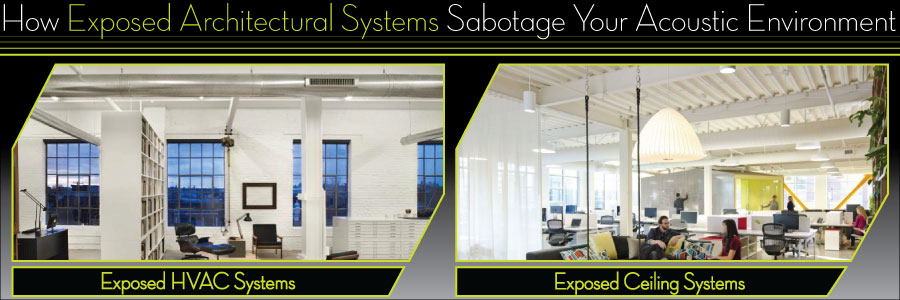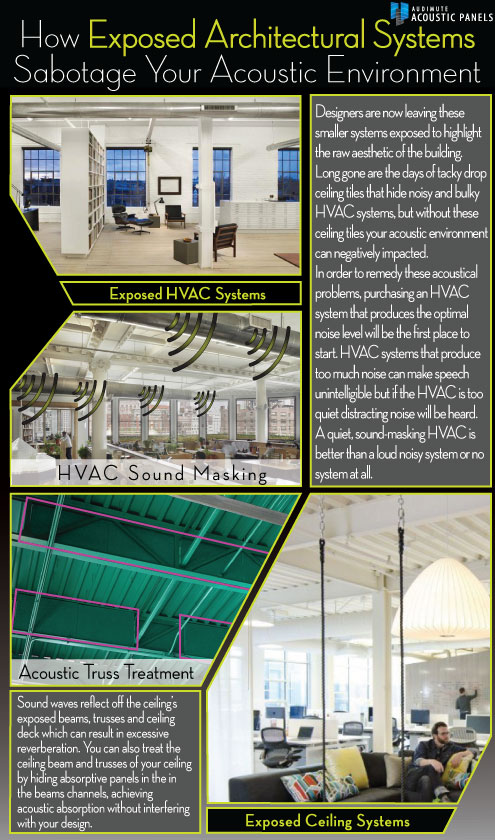How Exposed Architectural Systems Can Sabotage Your Acoustic Environment
- Mar 2, 2017

Over the past few weeks we have evaluated how modern design trends, like Dematerialization, Green Buildings and Exposed Systems, can effect your acoustic environment. This week we will conclude our Modern Design Series by looking into the acoustical effects that exposed architectural systems may have on your work environment. We will tell you how to use your HVAC system to create an optimal work place for your employees, and how to acoustically treat exposed ceiling beam and trusses.
HVAC Systems Are No Longer Hidden
Today, HVAC systems have been redesigned to be smaller, quieter and more efficient than ever. So designers are now leaving these smaller systems exposed to highlight the raw aesthetic of the building. Long gone are the days of tacky drop ceiling tiles that hide noisy and bulky HVAC systems, but without these ceiling tiles your acoustic environment can be negatively impacted.
Select the HVAC System with the Right Amount of Noise
In order to remedy these acoustical problems, purchasing an HVAC system that produces the optimal noise level will be the first place to start. HVAC systems that produce too much noise can make speech unintelligible but if the HVAC is too quiet distracting noise will be heard. A quiet, sound-masking HVAC is better than a loud noisy system or no system at all.
Other Exposed Systems that Create Acoustical Problems
Other exposed ceiling elements can cause additional acoustical problems. Sound waves reflect off the ceiling’s exposed beams, trusses and ceiling deck which can result in excessive reverberation. This reverberation can make conversation and concentration difficult. For the acoustical problems caused by exposed ceilings, sound absorption products can be utilized. Sound clouds are an effective acoustical treatment and can serve as the focal point for your space. You can also treat the ceiling beam and trusses of your ceiling by hiding absorptive panels in the in the beams channels, achieving acoustic absorption without interfering with your design.
Rewards for Acoustical Comfort
Selecting a quiet system and adding sound absorption products will help create an ideal work environment for your employees. Today, creating an acoustic environment that fosters productivity is more important than ever. As we mentioned last week, in our Green Building post, designers and contractor are now being rewarded, through LEED certification, for taking acoustic comfort into consideration when redesigning an office environment. If you need assistance with HVAC noise, please feel free to give us a call, 866-505-MUTE, and one of our specialists will be more than happy to assist you.



